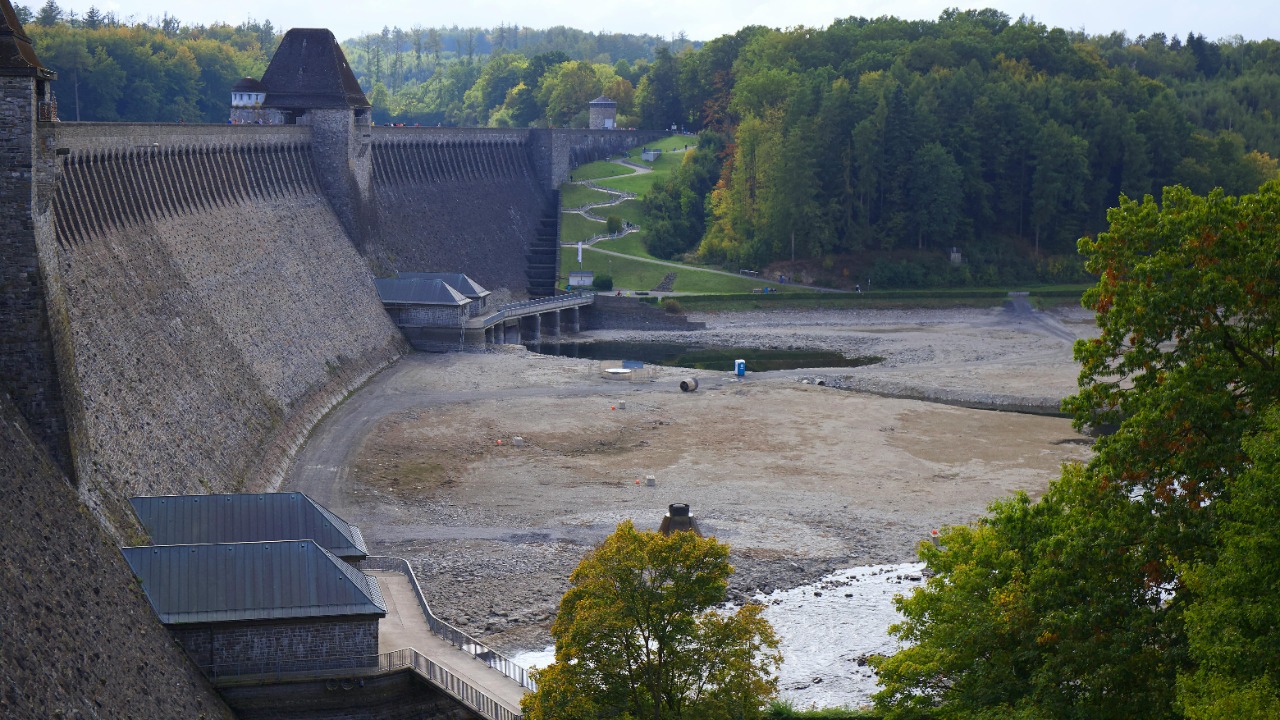
Recent findings from NASA have confirmed that a giant dam in China has had a significant impact on the Earth’s axis, demonstrating the profound influence of human engineering on our planet’s natural dynamics. This massive hydroelectric project has not only shifted the Earth’s axis but also affected its rotation due to the enormous volume of water it holds back.
The Giant Dam in China

China’s giant dam, a colossal hydroelectric project, has been identified as a significant factor contributing to the shift in Earth’s axis. The dam’s massive water reservoir has been instrumental in this phenomenon, according to Daily Star. This enormous construction is not just a marvel of human engineering but also a force powerful enough to influence the rotation of our planet, as reported by the Economic Times.
The dam, known as the Three Gorges Dam, is the world’s largest hydroelectric power station in terms of installed capacity. It spans the Yangtze River in Hubei province, China. The dam’s reservoir, with a surface area of over 1,000 square kilometers and a depth of approximately 175 meters, holds an estimated 39.3 cubic kilometers of water. This colossal volume of water, equivalent to about 16 million Olympic-sized swimming pools, has been redistributed from other parts of the Earth, causing a shift in the planet’s mass distribution. This shift has been significant enough to cause a measurable change in the Earth’s axis, as reported by the Daily Star.
NASA’s Confirmation of Axis Shift

NASA’s assessment has confirmed that the giant dam in China has indeed shifted the Earth’s axis. The agency’s findings reveal that the dam’s engineering impact has had a measurable effect on our planet’s rotation, as reported by The Express. This shift in the Earth’s axis is a direct result of the redistribution of mass caused by the dam’s construction and operation, according to Le Ravi.
According to NASA’s findings, the shift in the Earth’s axis due to the dam’s construction is approximately 0.06 milliarcseconds, or roughly two inches. This shift, while seemingly minuscule, is significant on a planetary scale. The shift is caused by the redistribution of mass, specifically the water held back by the dam. This redistribution of mass has resulted in a phenomenon known as ‘true polar wander,’ where the Earth’s axis of rotation shifts in response to changes in the distribution of mass on the planet. This shift has been confirmed by NASA’s satellite data and advanced geodetic techniques, as reported by The Express.
Effects on Earth’s Rotation

The impact of the dam extends beyond the shift in Earth’s axis. NASA’s findings indicate that the dam has also influenced the Earth’s rotation. However, the exact nature of this influence is complex. While some reports suggest that the dam has made days shorter by affecting the Earth’s spin, others indicate that the dam has slowed down the Earth’s rotation. Both these effects are related to changes in the distribution of mass on the Earth due to the dam’s massive water reservoir.
The dam’s impact on Earth’s rotation is a result of the principle of conservation of angular momentum. As the Earth spins, it behaves like a giant spinning top. When mass is redistributed on the Earth, as is the case with the dam’s massive water reservoir, it can cause the Earth to wobble and its rotation to slow down. This slowing down of the Earth’s rotation can lead to an increase in the length of a day. According to NASA’s calculations, the dam has added approximately 0.06 microseconds to the length of a day. While this change is too small to be perceived by humans, it is a significant finding in the field of Earth sciences.
Scientific Mechanism Behind the Changes

The changes in Earth’s axis and rotation are a result of the dam’s impact on the distribution of mass on our planet. The dam’s massive water reservoir has displaced a significant amount of water mass, slowing down Earth’s spin, as confirmed by Eco Noticias. This displacement of water mass and the resulting gravitational effects are the primary mechanisms through which the dam affects Earth’s rotation, as explained by the Economic Times.
The scientific mechanism behind the changes in Earth’s axis and rotation involves the principles of physics and geology. The Earth’s rotation is governed by its angular momentum, which is conserved unless acted upon by an external torque. The dam’s massive water reservoir acts as this external torque, causing a redistribution of mass and a change in the Earth’s moment of inertia. This change in the moment of inertia results in a change in the Earth’s rotation and a shift in its axis. The gravitational effects of this mass redistribution also contribute to the changes in Earth’s rotation and axis. These scientific principles and mechanisms have been confirmed by NASA’s research and findings, as reported by Eco Noticias and the Economic Times.
Timeline of Reporting on NASA’s Findings

The reporting on NASA’s findings about the dam’s impact on Earth’s axis and rotation has been ongoing. Initial reports confirming the dam’s role in changing Earth’s axis and influencing the length of days emerged in late August 2025, as reported by Le Ravi. Further coverage on the dam’s impact appeared in early October 2025, as reported by The Express. The reporting on the dam’s role in slowing down Earth’s rotation dates back to January 2025, as reported by the Economic Times.
Following the initial reports in January 2025, NASA’s findings have been widely reported and discussed in the scientific community and the media. The reporting has evolved over time, with initial focus on the dam’s role in slowing down Earth’s rotation and later reports confirming the dam’s impact on Earth’s axis. The timeline of reporting reflects the progression of understanding and the increasing recognition of the dam’s significant impact on Earth’s natural dynamics. The reporting has also highlighted the importance of ongoing research and monitoring to fully understand the long-term effects of such large-scale engineering projects on our planet’s natural dynamics, as reported by Le Ravi and The Express.
Implications of Human Impact on Planetary Dynamics

The findings about the dam’s impact on Earth’s axis and rotation highlight the profound influence of human engineering on our planet’s natural dynamics. The dam’s effects serve as a stark reminder of how large-scale projects can influence Earth’s axis and rotation, as reported by Daily Star. These insights from NASA underscore the need for a deeper understanding of the potential impacts of such projects on our planet’s natural dynamics.
The implications of the dam’s impact on Earth’s axis and rotation extend beyond the scientific community. These findings underscore the profound influence of human activities on our planet’s natural dynamics. They highlight the need for careful consideration and assessment of the potential impacts of large-scale engineering projects on Earth’s natural systems. The dam’s effects also raise important questions about the sustainability and long-term consequences of such projects. These insights from NASA serve as a reminder of our responsibility to understand and mitigate the potential impacts of our actions on the planet’s natural dynamics, as reported by the Daily Star.